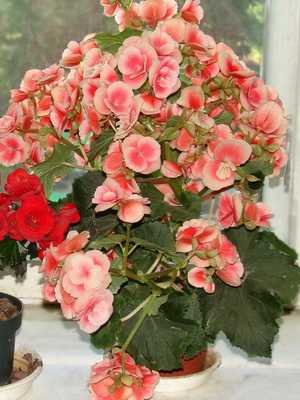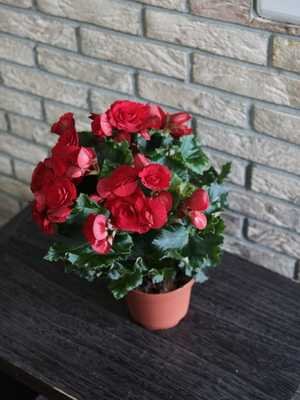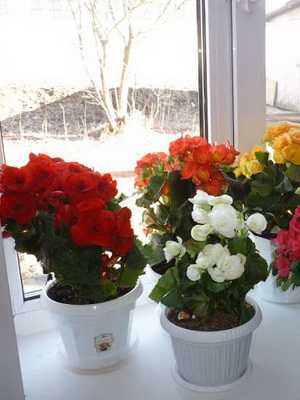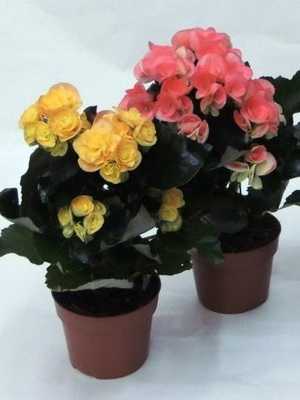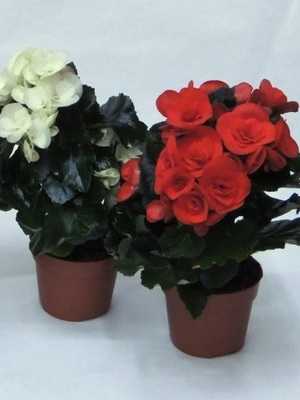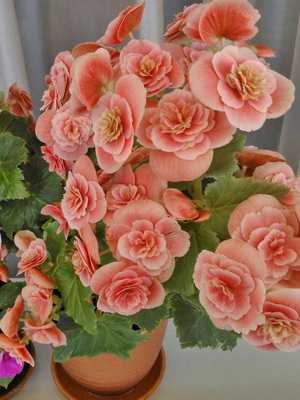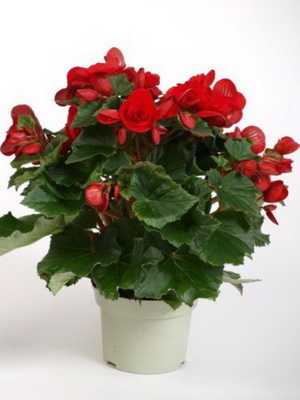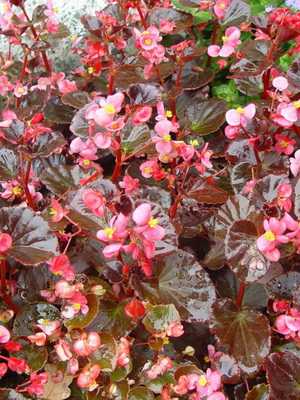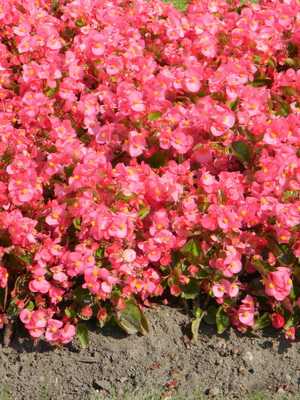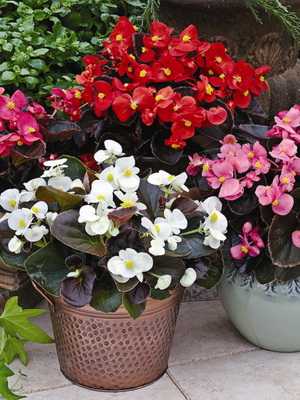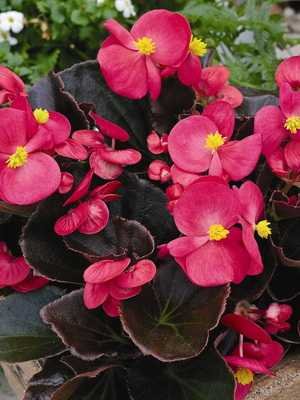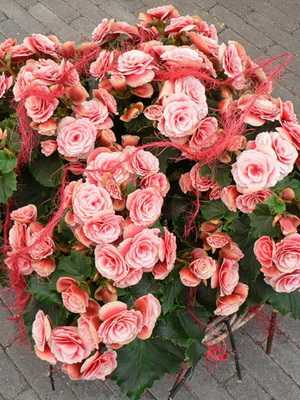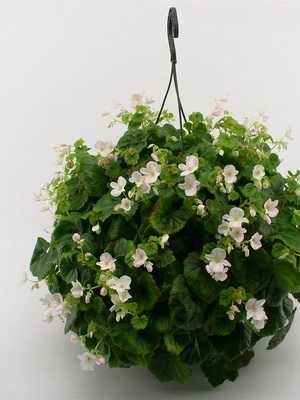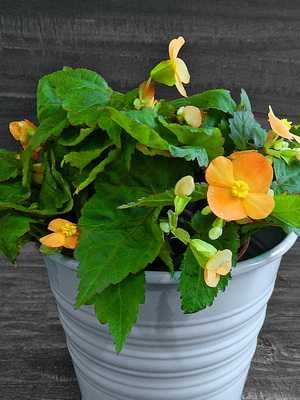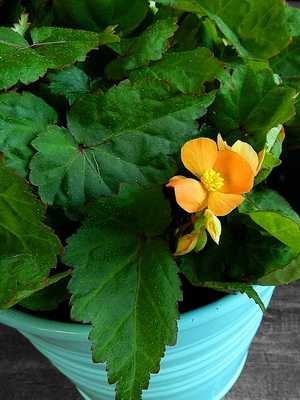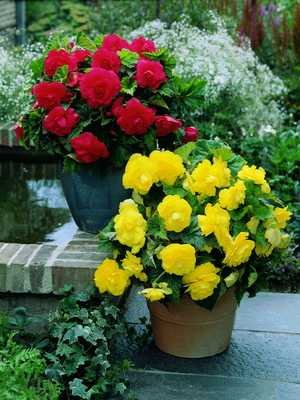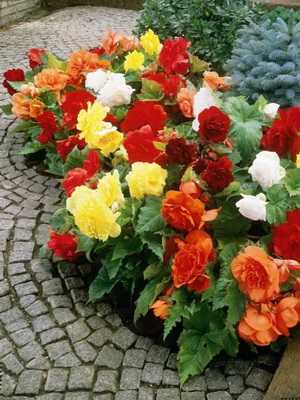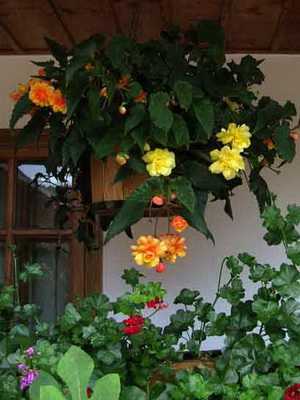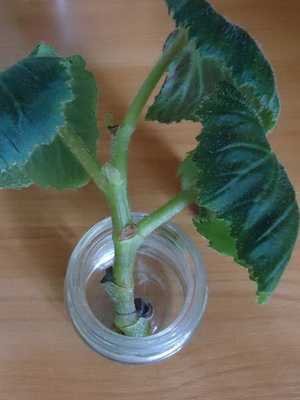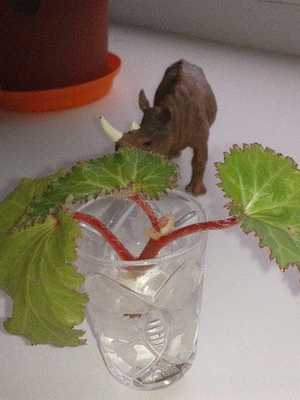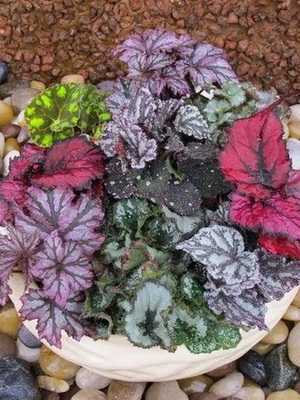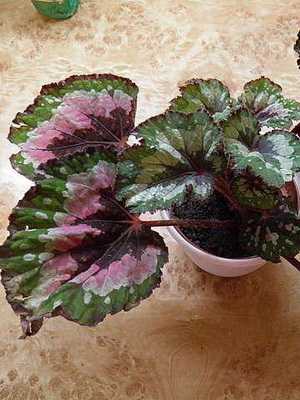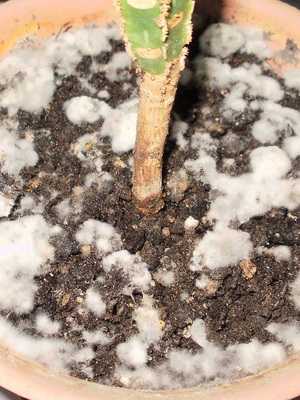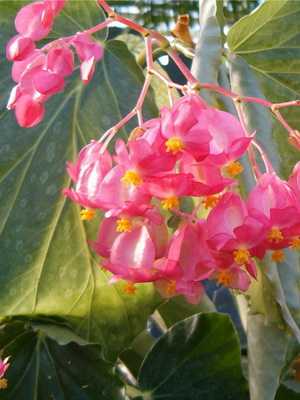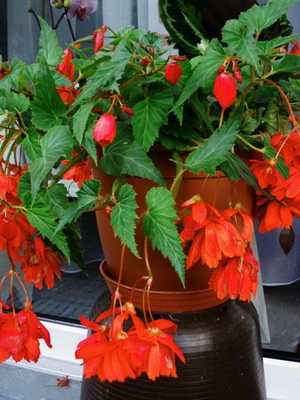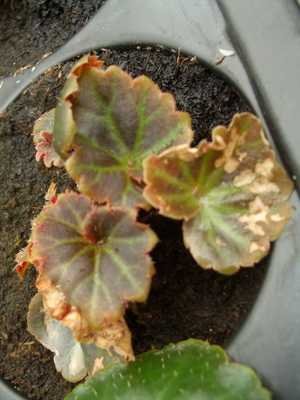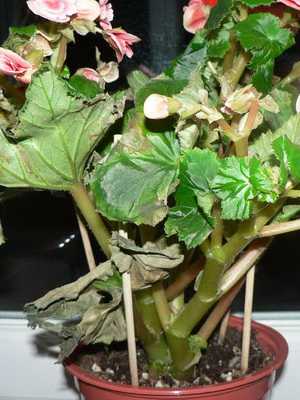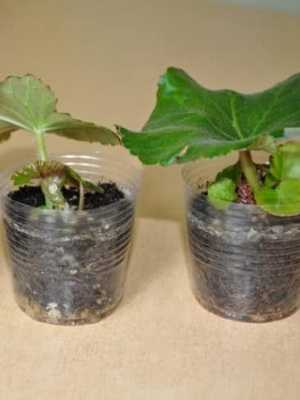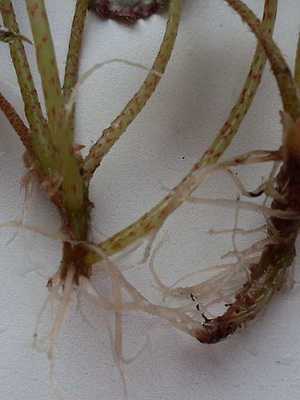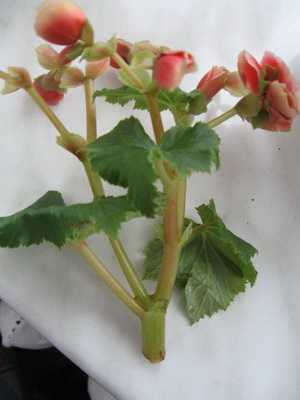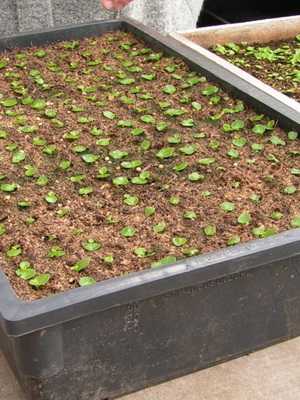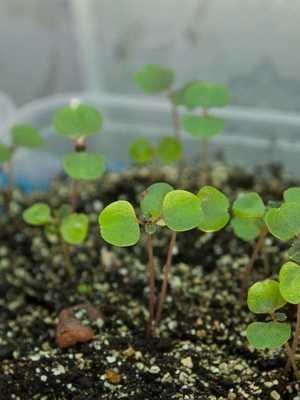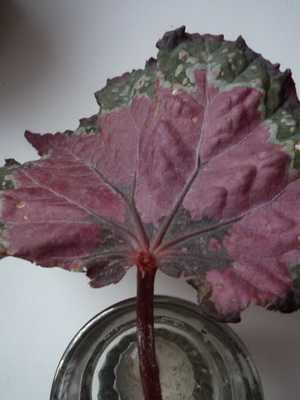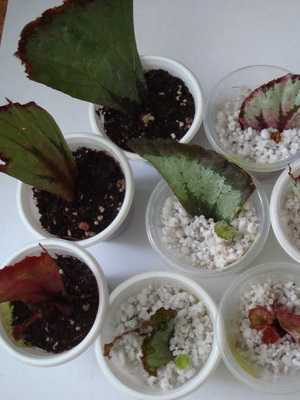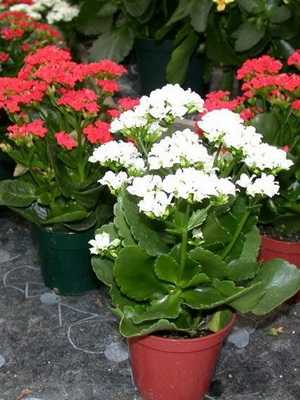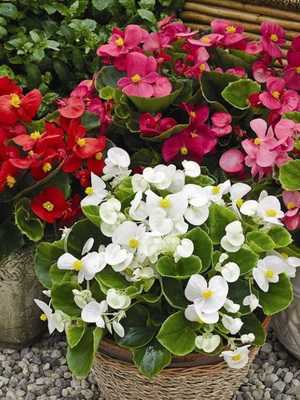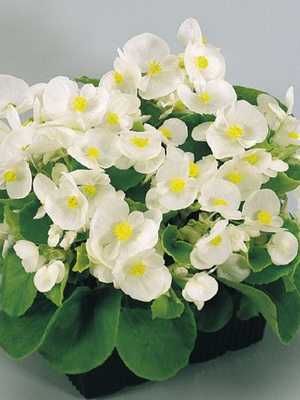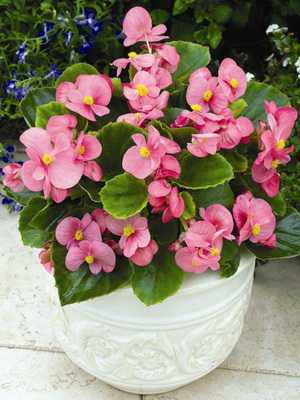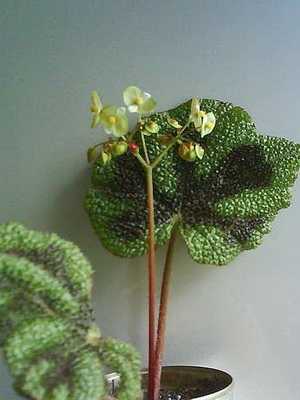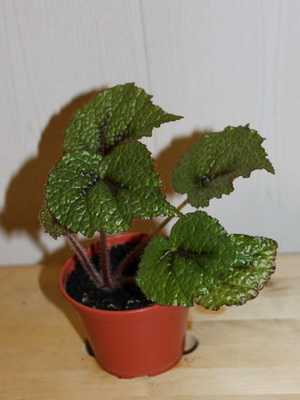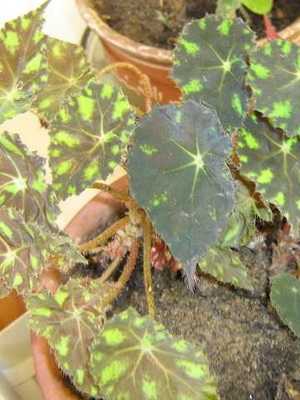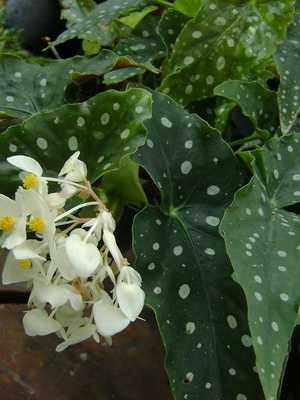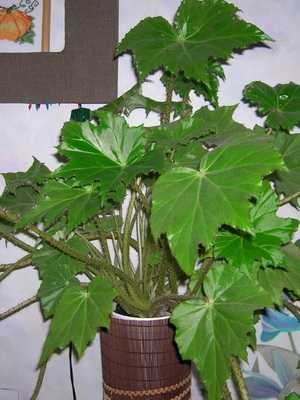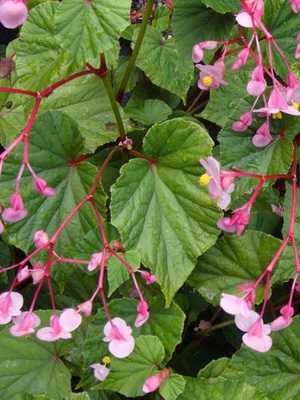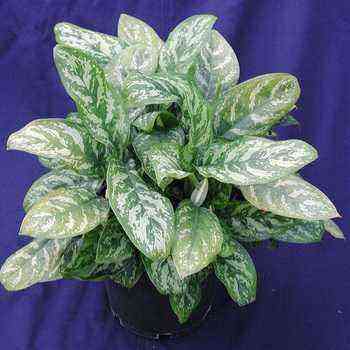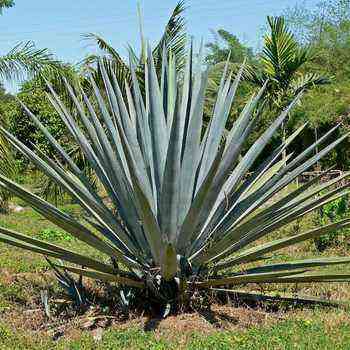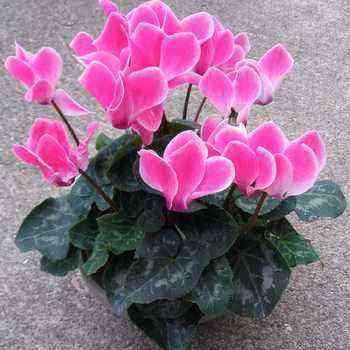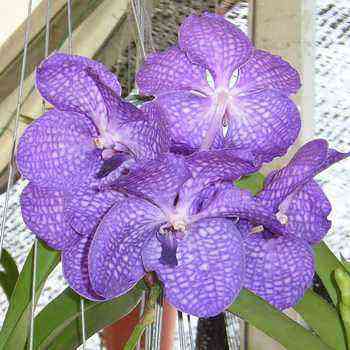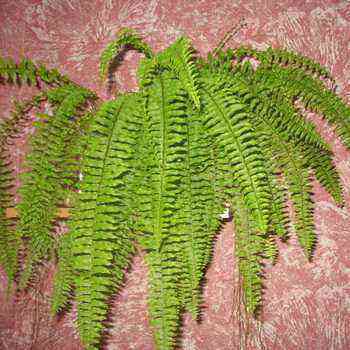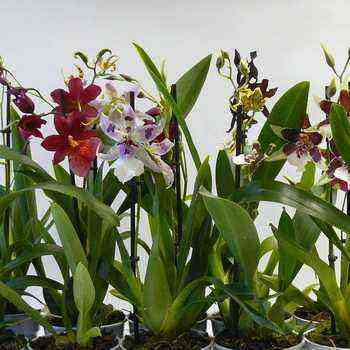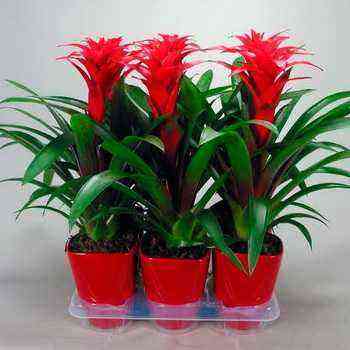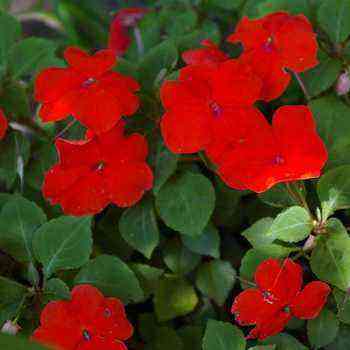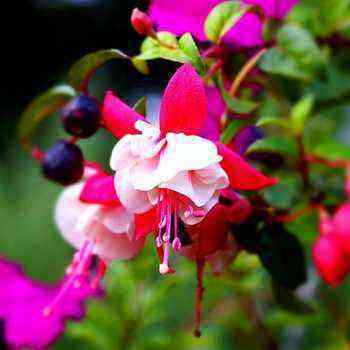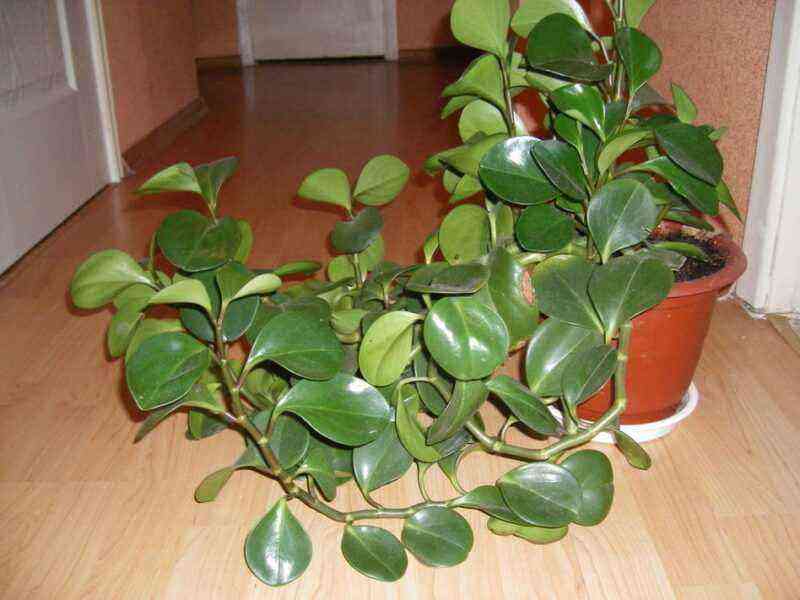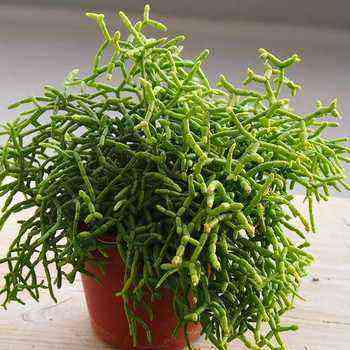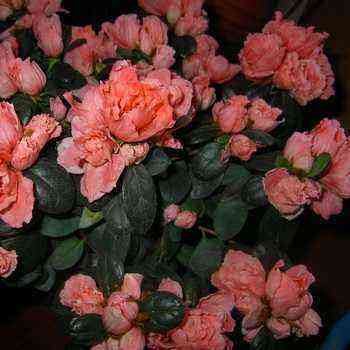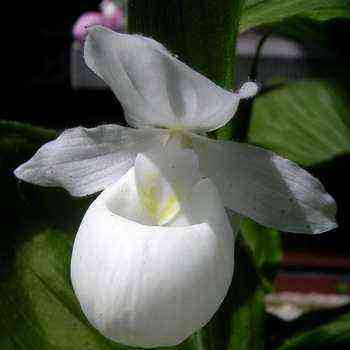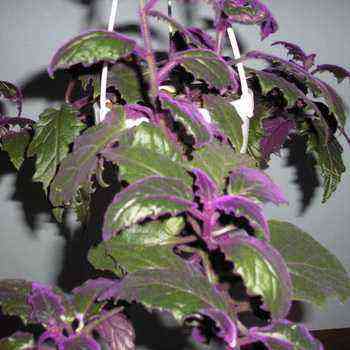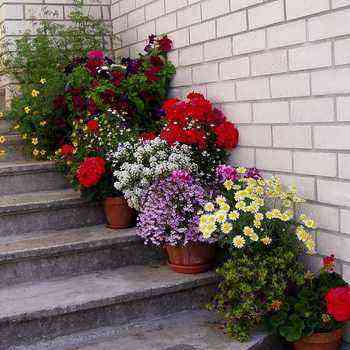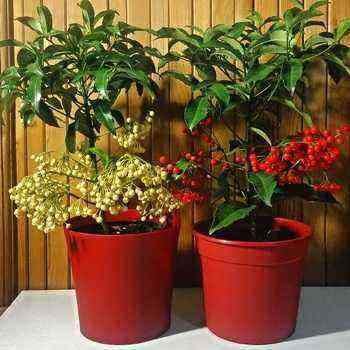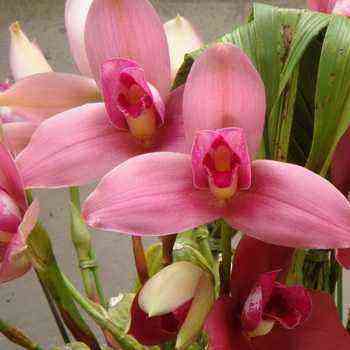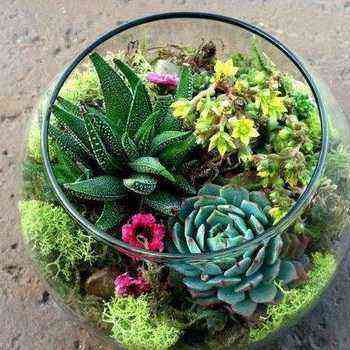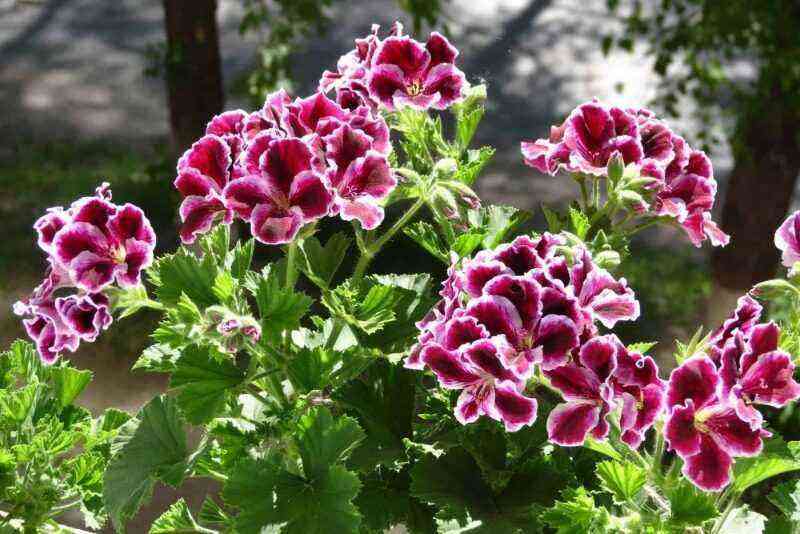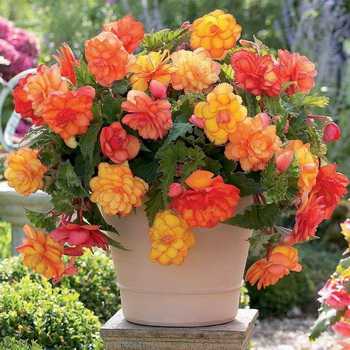
What a begonia flower looks like: plant characteristics
The begonia plant (Begonia) belongs to the Begonia family. Behind these words lies the richest and most diverse world, uniting about 1000 species of annual and perennial herbaceous plants, shrubs and dwarf shrubs, growing both terrestrial and epiphytic. The number of all kinds of hybrids and varieties, according to experts’ estimates, exceeds several thousand. Thanks to this variety, begonias are popular in both gardening and indoor floriculture.
All kinds of begonia flowers are native to the tropical regions of both hemispheres. Named after the XNUMXth century Governor of Tahiti, Michel Begon, a great lover and gatherer of flowers.
The first thing worth noting when describing a begonia plant is the variety of forms: these can be shrubs (occasionally climbing), dwarf shrubs and, most often, herbaceous plants with erect, creeping, sometimes ampelous shoots. The seeds of all begonias are extremely small. The fruit is a capsule.
A common characteristic of the begonia plant is the presence of succulent fleshy stems with asymmetric leaves on the petioles, unisexual flowers, located 2-3 in the leaf axils. Luxurious flowering and decorative leaves made begonias very popular houseplants. When describing the flowers of begonias, they are conventionally divided into three groups, depending on the nature of the underground part of the plant: leafy, tuberous and bush.
Blooming begonia is a wonderful decoration for a summer balcony or veranda.
Begonia has an interesting Russian name, indicating that this plant was widespread in Russia as early as 1812. During the flight of the French from Moscow, begonia was called “Napoleon’s ear”. Indeed, in outline and from the lower red side, the begonia leaf looks like a large frostbitten ear.
Decorative-leaved begonias naturally grow in the tropics and subtropics of Asia, Africa and America. Begonias are valued for their leaves of magical beauty – their ornament, unique color: from bright red with painting to brown, purple, silver-green. Flowers have no decorative value.
See what a begonia flower looks like in these photos:
The flowers of many begonias are non-pollinated and do not produce seeds. Begonias should have died, but they cover many places in the rainforest with an almost continuous carpet. Let’s take a closer look. Here beautiful leaves have fallen on moist soil. The delicate sheet does not dry out. The freshness of the leaf depends on the good wettability of the leaf surface, as well as on the presence of aquiferous tissue in the leaf petiole (similar to the aquiferous tissue of succulents).
Further you can see the photos, names and descriptions of begonias of different types and varieties.
What are the popular types and varieties of begonias: photos, names and descriptions of flowers
There is no single classification of begonias. Some experts propose to subdivide all types according to the options for the development of the root system: – with a tuberous rhizome, – with a creeping rhizome, – with a fibrous root system. Such a classification is important when choosing a breeding method. There is a variant of classification based on the nature of growth and morphological characteristics of the shoots: – with erect ligneous shoots, – with thick shoots, similar to rhizomes, – with thin drooping or creeping shoots, – bushy begonias with juicy erect shoots. Despite such a pronounced external difference, begonias also have common features. All of them are monoecious, that is, both male and female flowers are on the same plant. When pollinated, from the female (pistillate) flowers, the fruit develops – a triangular box with small numerous seeds.
Flowers are collected in racemose inflorescences or arranged in pairs in the axils of alternate leaves. Most species, especially deciduous ornamental, are characterized by an asymmetric shape of leaf blades. And one of the most characteristic features of begonias is the unique ability to vegetative reproduction – few other crops are able to grow from a small piece of a leaf. With regard to indoor floriculture, it is more convenient to divide all available types and varieties of begonias into deciduous-decorative and flowering, additionally highlighting the tuberous begonia (Begonia tuberhybrida), which is associated with the peculiarities of the placement, care and use of these plants in phytodesign.
Wild begonias have flowers less than ten centimeters. But these sizes seemed small to gardeners, and over the course of eighty years they achieved an increase in them by selection and crossing. The breeder Vilmorin succeeded by crossing two wild species of begonias to obtain a hybrid that blooms in winter. This variety of begonias is called “glouard de Lorrain”, that is, “the glory of Lorrain” (a famous artist).
Modern varieties of tuberous begonias produce flowers of 20 (for example, the Everest variety) and even 30 centimeters in diameter, that is, exceeding the size of flowers of large chrysanthemums and peons.
Gardeners, as athletes, annually set world records for the beauty, shape, color (color), size and number of flowers of the plants they produce.
The new varieties cannot be compared to the “primitive” begonias. They look more like roses or camellias. There were no such flowers in nature.
These are hybrids, their parents are begonias from different countries of the world, and their homeland is the gardener’s greenhouse. These flowers are created by human art.
The following types of begonias are characterized by their original beauty and relative undemandingness:

Begonia Bauer (B. boweri)

Brilliant begonia (B. hitida)
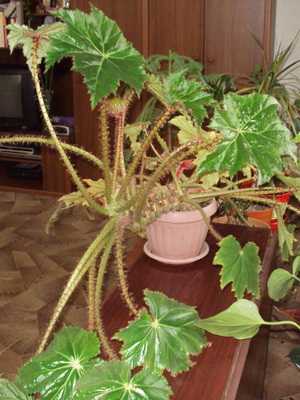
Begonia hogweed (B. heracleifolia)
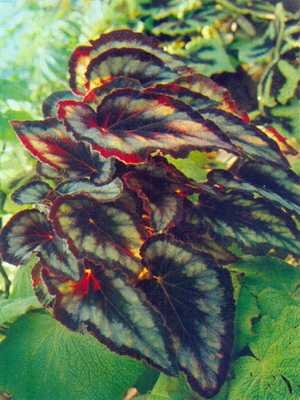
Veinous begonia (B. venosa)

Catayan begonia (B. cathayanа)
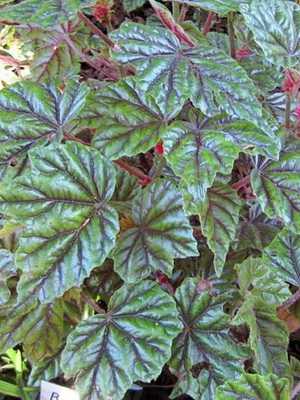
Metallic begonia (B. metallica)
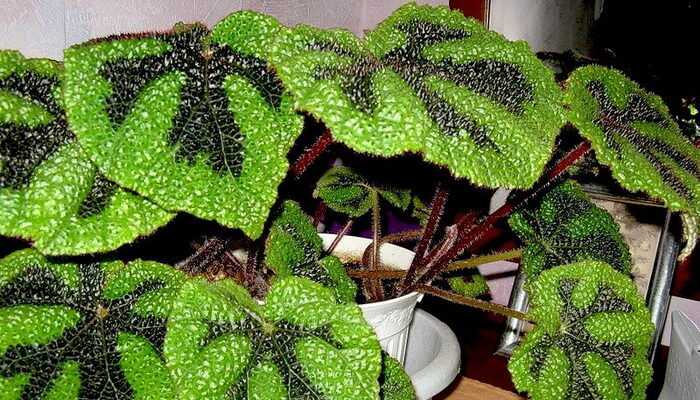
Begonia Mason (B. masoniana)
The most popular varieties are:
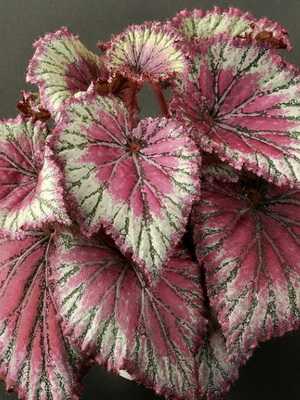
Begonia royal “Mary Christmas” (‘Merry Christmas’)
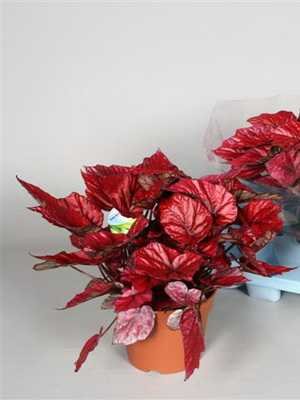
Begonia royal “Mikado” (‘Micado’)
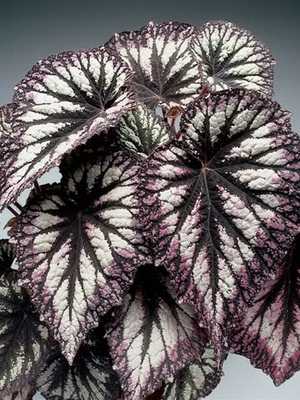
Begonia royal “Pearl de Paris” (‘Perle de Paris’)
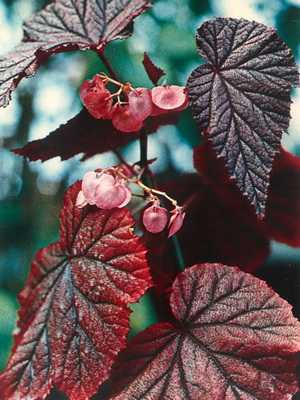
Begonia “Arthur Mallet” (‘Arthur Mallei’)
Look at the photos of popular types of begonias, the names of which are given above:
For a better orientation of amateur gardeners, all cultural begonias are divided into 3 groups: begonias with decorative flowers, begonias with decorative leaves, and bush begonias. Although such a systematization is not precise, since it does not exclude the possibility of including the same plant in different groups, it makes it easier to choose the right begonia and recommendations for its care.
The group of begonias with decorative flowers includes:
Type begonias “Lorraine”which appeared at the end of the XNUMXth century and under the name “Gloire de Lorraine” have long dominated the market. This variety of begonias blooms in winter with white or pink flowers. Nowadays, it is quite rare in flower shops.
Type begonias “Elatior”, bred in England at the beginning of the XNUMXth century from tuberous begonias. They bloom all year round with white, red, pink, yellow flowers. They are generally larger and brighter than the similar flowers of the Lorraine hybrids. In the Elatior group of begonias, the most popular are the Rieger begonias, which are named after the breeder.
Hybrids blooming all year round evergreen begonias (B. semperflorens). They tolerate the sun better than the varieties listed above, and mainly grow in gardens and squares, flower beds and lawns. They can also be planted in pots, especially begonias with decorative flowers.
Tuberous begonias.
Ever-flowering begonia -B. Semperflorens.
Flower lovers can be offered ever-flowering begonia. Caring for her is almost the same as for the royal begonia and its varieties. The only difference, perhaps, lies in the fact that the temperature of +18 ºС is comfortable for it. Until the beginning of flowering, this begonia variety needs to be fed monthly with fertilizers, then it will be longer and more luxuriant. The AVA fertilizer is well suited for this. To make the plant look better, the faded flowers must be removed.
Flowering begonias are perennial and annual. Perennials are bush begonias, and annuals are tuberous. Of the perennials, I would like to note begonia, which reaches a height of 80 cm, blooms with red or white flowers, and its leaves with a silvery down. Of the annuals, begonia is especially good, blooming mainly in winter – with red, white or pink flowers. From hybrids, you can opt for begonias with large flowers, simple or double, the color range of which can be not only white and pink, but also red, and even yellow.
Wintering begonia – B. x hiemalis.
Plants with simple or double flowers of a wide range of shades, mainly red, pink, yellow, orange and white. They evolved from a cross between B. socotrana and tuberous begonias from South America.
Winter-flowering begonia – B. x cheimantha, or Loren’s begonia – B. Lorraine.
The name of this type of begonias is given for their ability to bloom in winter. The hybrid B. x cheimantha, obtained by crossing between B. socotrana and B. dregei, blooms in winter and forms groups of small pink or white flowers. The pink-flowered Gloire de Lorraine is one of the best known varieties.
These photos show varieties of winter-flowering begonias:
Begonia Sutherland -B. Sutherlandii.
This type of houseplant begonia is an ampelous crop with small lanceolate leaves and an abundance of simple orange flowers in a loose inflorescence in summer.
Many varieties of begonias are known, including:
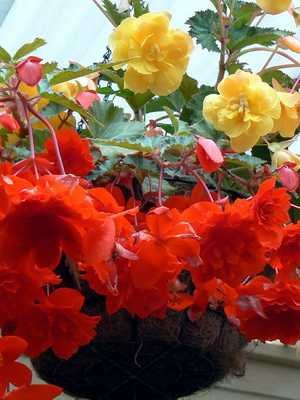
Ampelny B. x t. pendula (Tuberous drooping begonia), with simple and double flowers, used for hanging baskets

B. x t. multiflora (Tuberous multiflorous begonia) with a mass of simple, semi-double and double flowers
The flowers are red, orange, pink and yellow. They all bloom during the summer months.
Other types of houseplants begonias and their care
Tuberous begonia -B. X tuberhybrida.
Polyhybrid species originating from multiple crosses of eight-petalled begonia with Bolivian begonia, Perseus, Vicha, Devozi, etc. Plants with a thick underground tuber-rhizome, with a translucent succulent stem, 20–80 cm high. The leaves are alternate, with a varied pattern, heart-shaped, somewhat asymmetric, flowers are simple, semi-double and double, 10-15 cm in diameter, all kinds of colors – from pure white to dark red, yellow, orange, except blue and purple. Plants are monoecious, flowers are dioecious, require cross-pollination. Male flowers bloom earlier than female flowers, they are larger, double, female non-double. This should be taken into account when propagating begonias with tuberous seeds.
When caring for this type of indoor begonias, you should regularly cut out small female flowers that appear next to large, spectacular male ones, and also constantly pick up old flowers (with the exception of small-flowered species).
According to the shape and structure of flowers, numerous varieties of tuberous begonia are divided into three classes:
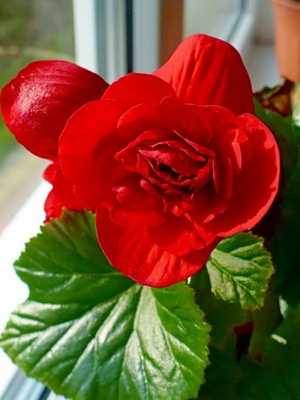
Giant (Gigantea) – with very large (up to 20 cm in diameter) flowers
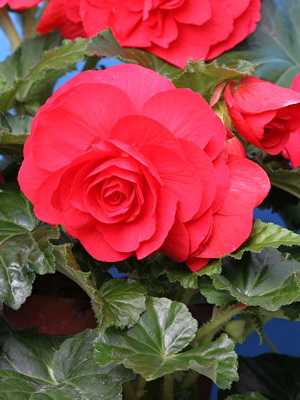
Large-flowered (Grandiflora) – with flowers with a diameter of 8-10 cm
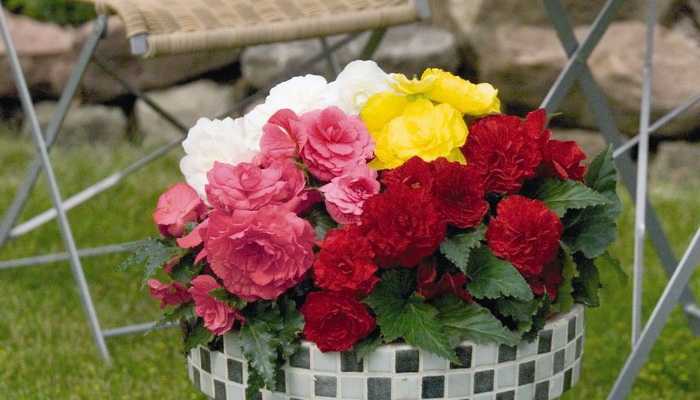
Multi-flowered (Multiflora) – the diameter of the flowers is 3-5 cm.
In each class, groups are distinguished according to the shape of the petals:
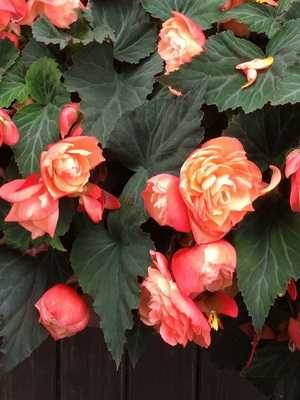
comb (Cristata)

with fringed edges – fringed (Fimbriata)

With folded edges – folded (Сrispa)
Subgroups according to the shape of flowers have also been identified – pink, daffodil, camellia and peony.
Tuberous begonia can be used both as a pot plant and as a flower garden plant. Tuberous begonia propagates by seeds, tubers and their division, less often by cuttings. With seed reproduction, plants bloom on the 135-150th day after germination. To obtain seeds, artificial pollination is carried out. From 1 g of seeds (10-13 thousand pieces), you can get up to 3-5 thousand well-developed plants. Germination lasts up to 3-4 years. The optimal sowing time is December. Seeds are sown into leafy soil or a mixture of rotted manure, leafy soil and sand (1: 2: 1) at a temperature of 22-25 ° C. Seedlings appear on the 14-15th day. They dive in the phase of two cotyledonous leaves into leafy ground at a temperature of 20-22 ° C, cover with glass for 2-3 days for better rooting of seedlings. When the leaves close, they dive a second time, then a third. The soil mixture for the second and third picks is composed of leafy, soddy soil, peat and sand (4: 2: 2: 1), pH 6–6,5. After the third pick, when the leaves close, the begonia with a clod of earth is planted in 11-13-centimeter pots in the same soil mixture with the addition of leafy soil (one part). Organic fertilizers are added to this mixture. After planting, the plants are watered abundantly, slightly shaded.
Tuberous begonias require even moisture in summer. The air is sprayed around the plant. When growing begonias at home, from May to October, the plants are fed weekly.
Before the first frost, the tubers are dug up and stored at about 10 ° C. Previously, at a height of 2-3 cm from the tuber, the greens are cut. You can also leave the tubers in the pot by placing it in a cool place and keeping watering to a minimum.
Depending on the desired flowering period, tubers or parts of them are planted in January-February in a nutrient mixture of sod, deciduous, peat land and sand. The top of the tuber should protrude from the ground. Sprinkle with warm water. When the sprouts get stronger, the tops of the tubers are covered with earth.
Reproduction of this begonia is produced by tubers by dividing them in spring into parts with sprouts. The place of the cut must be sprinkled with crushed coal.
Tuberous begonia is very photophilous, therefore it is better to cultivate it on the southern windows, since in the northern ones it loses its decorative effect. Blooms in 5-6,5 months after sowing, and grown from tubers – 1-1,5 months earlier. In the open field it blooms until frost, and in rooms until November.
With sharp fluctuations in temperature, plants in October can shed their leaves. After flowering, they gradually pass into a dormant state. At this time, when growing and caring for home begonia, watering is reduced, the plants are transferred to a dark place. After 1–1,5 months, the aerial part dies off, and the tuber should remain in the ground for another 2–3 weeks, then it is removed and placed in a box with sand. Store at a temperature of 12-14 ° C, the sand is periodically slightly moistened. In January, the tubers are laid out in the same soil mixture as for planting, germinated at a temperature of 20-22 ° C, the growing plants are planted in pots with a diameter of 13 cm. The stems of begonias grown from tubers are much thicker, the bushes are taller. They usually require a garter belt, especially in the second half of summer.
When propagating room begonias by dividing the tubers, the latter are germinated before planting. After the sprouts appear, the tubers are cut into pieces with a sharp knife so that there are 3-4 sprouts on each division. To decorate flower beds, the flower bed is planted after spring frosts (mid-May) in partial shade on semi-humid lawns. Summer care consists in the systematic loosening of the soil, moderate watering, timely cleaning of fading flowers. When growing indoor begonias, feeding begins before budding. They are fed once every three weeks with a solution of mineral fertilizers.
Royal begonia.
Royal begonia comes from America, but probably everyone knows this plant – even those who are not fond of floriculture. At least everyone heard the name of the flower. I was not mistaken in saying “flower”. Begonia fell in love with us for its lush, bright and long flowering.
However, there are also species of this plant that are valued not for flowering, but for their unique color of leaves.
Royal begonia is one of them. In the room for her, you need to find a place with good illumination. But it must be borne in mind that royal begonia does not tolerate direct sunlight, so it will feel great on a window facing the north side. She also does not tolerate drafts. If the plant is cold, it begins to shed its leaves. On the other hand, dried out at the edges or twisted foliage means that the begonias, on the contrary, are too hot. It should be watered and moved to a cooler place.
In hot weather, it is imperative to increase the humidity in the room, and in no case should you spray the leaves with water. In summer and spring, when leaving and breeding begonias at home, the plant should be watered with warm water that does not contain lime. During the flowering period, you need to monitor the soil: it must always be moist. But if the stem of a plant rots, it means that you water it too often or abundantly. You can put the begonias on a pallet of gravel (it should be wet) to create a more comfortable environment for your plant.
Pests and diseases, such as mold or rust, can develop on begonias if you humidify the air too much or the temperature in the room is very low.
In order for the foliage to develop well, pick off flowers in time. And do not forget to feed the plant (especially if the leaves have become small). Do not forget that the beauty of this variety lies precisely in its foliage.
However, with age, begonia leaves still coarsen, so every two years it is worth updating the plants by planting new ones with the help of cuttings. You take a leaf and, after making several cuts in the place of the veins, put it on damp ground. Shoots will appear near the incisions. When young plants reach a height of 5–10 cm, they can be planted in specially prepared containers.
If begonia roots appear on the surface of the soil, you need to take a more spacious container and, filling it with fertile soil in half with peat, transplant your plant.
The most common varieties of royal begonias are:

Yellow – semi-spreading variety, up to 23 cm high, light green leaves, flowers 10-11 cm in diameter, simple, yellow, beginning of flowering from June, blooms until frost
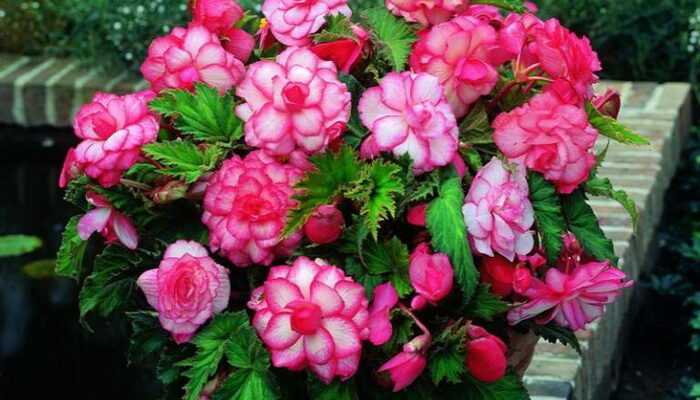
“Rose” – semi-spreading variety, up to 20 cm high, bright green leaves, flowers 9-10 cm in diameter, pink, double

“Samon Rose” – sprawling variety, up to 18 cm high, bright green leaves, flowers 9-11 cm in diameter, pink, double
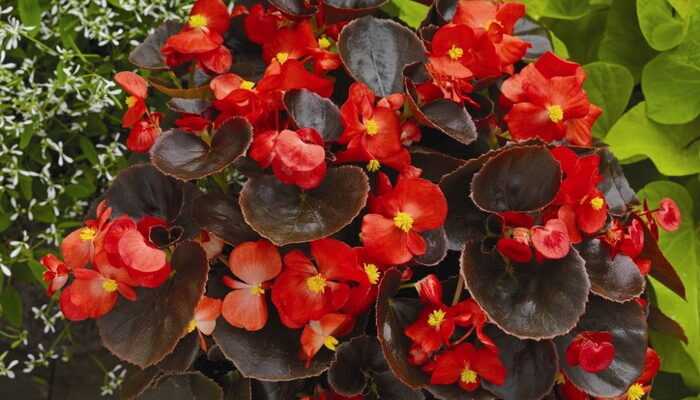
“Scarlit” – sprawling variety, up to 18 cm high, pink-scarlet flowers, double, 9-11 cm in diameter
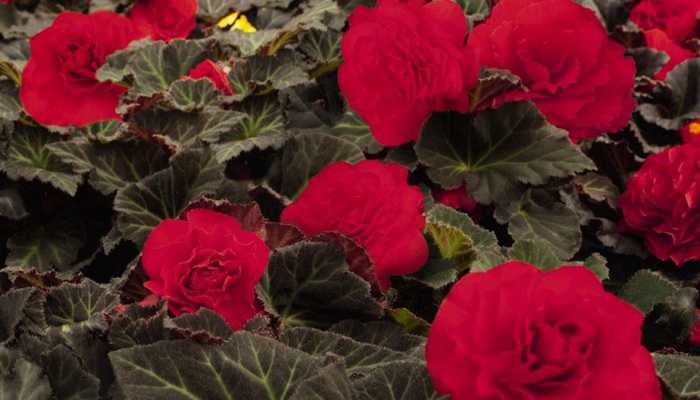
“Dark” – semi-spreading variety, 15-16 cm high, flowers 9-11 cm in diameter, dark red, double
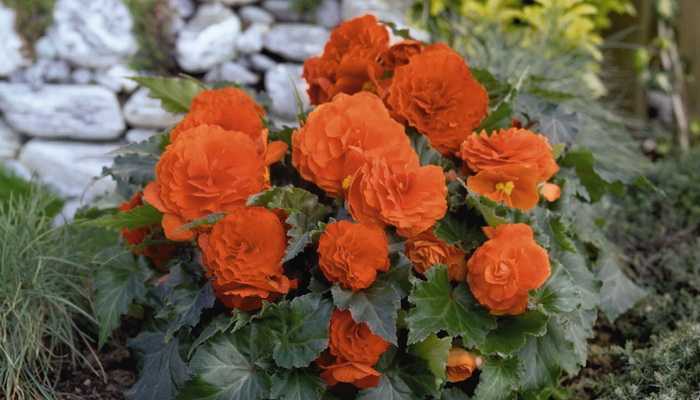
“Orange” – semi-spreading begonia variety, 15-16 cm high, orange flowers, double, up to 10 cm in diameter
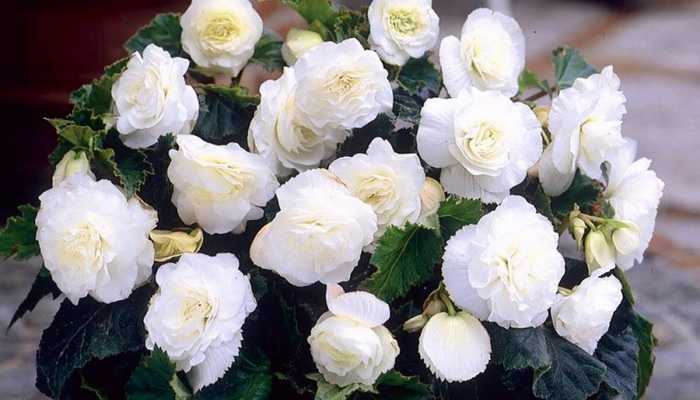
“White” – compact variety, up to 16 cm high, white, double flowers, up to 10 cm in diameter
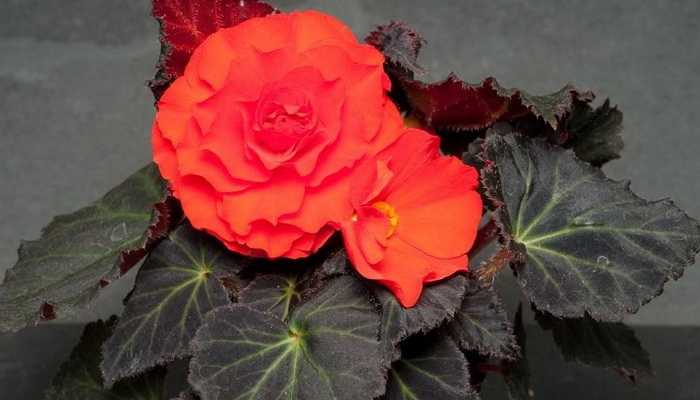
“Dark Scarlit” – compact variety of begonia, up to 16 cm tall, dark green leaves, flowers up to 4 cm in diameter, dark scarlet, double
All these varieties bloom profusely from June until frost and can be grown both outdoors and at home.
The variety of begonias allows you to choose a plant with a color scheme that matches the interior of your apartment. Leaves can be nearly black or dark green; with silvery, reddish or dark green stripes. There is a variety in which the top side of the leaf is silvery and the bottom is purple. There is a variety with pale green foliage, numerous veins and a dark spot in the center. And the leaves of begonia are covered with red scales, and the edges are torn and resemble a fringe.
As you can see, lovers of this plant have a wide choice. And there is no such apartment or house where at least one of the listed types of begonias fits in.
Growing room begonia: how to care for a flower
For winter-flowering species, the optimum temperature is 13–21 ° C. High humidity for begonias is beneficial, but not particularly important.
The plant is light-requiring, but protect it from direct sunlight. In winter, try to provide as much light as possible.
One of the important conditions for growing begonias is abundant watering during the flowering period, the rest of the time they are watered as needed. Watering should be gradually reduced for species that have a dormant period as soon as the leaves begin to turn yellow. Begonias are susceptible to both underwatering and overwatering.
During budding and flowering, feeding with a weak fertilizer is required.
When growing and caring for begonias in rooms, it should be borne in mind that they do not like direct sunlight. They need high air humidity, sudden temperature changes and drafts are contraindicated. In summer, plants are recommended to be placed on a pallet with pebbles filled with water. Most of the species do not have dormant periods, they grow all year round with some slowdown in the autumn-winter period. The optimum temperature in summer is -21-25 ° C and in winter 15-18 ° C. If the temperature cannot be reduced in winter, additional lighting must be provided. The begonia substrate should consist of sod and leafy soil, humus, peat and sand (2: 1: 1: 1: 1). You can use the special Begonia substrate sold in stores.
It is best to keep begonias on windowsills, some species feel especially good at the northern exposure windows. During the growing season, in summer, abundant watering is required, in winter – moderate. The plant is fed twice a month, in winter – once every 1,5-2 months with flower fertilizer. It should be remembered that it is better to underfeed the plant than to overfeed. The transplant is carried out annually in the spring.
Difficulties in breeding begonias include the possibility of being affected by gray mold (in this case, brown spots appear on the leaves, which are then covered with a gray bloom) or powdery mildew (white powdery coating on the leaves).
Yellowing leaves or dropping of buds indicate a lack of light or a lack or excess of moisture in the soil, thin and poorly leafy stems – about a lack of light, dry and twisted leaves – about too high an air temperature. The reason for the appearance of leaves with brown tips is too low air humidity.
Plants are sometimes attacked by spider mites. This usually means that the indoor air is dry.
The death of a plant can occur for various reasons: decay of roots due to waterlogging of the soil, damage by nematodes (note if there are swellings on the roots) or weevils (see if the tubers are eaten).
Breeding methods for indoor begonias at home: cuttings, tubers and leaves (with photo and video)
There are several ways of propagation of begonias: leaf and stem cuttings, seeds, division of rhizomes.
The propagation of a begonia flower can be done by pieces of branches with two to three leaves. These pieces of branches are called cuttings. The cut of the cutting is made with a safety razor slightly beveled under the leaf nodule. The leaves are cut in half. A hole is made in the wet sand with a stick, not straight, but sideways, almost parallel to the surface. Half a cutting is inserted into this hole and pressed with sand. The roots are formed only when air is available, that is, with good breathing, which is why they plant the stalk so that its cut, where the roots are formed, would not sit deep.
When begonias are propagated by cuttings, sand is also used at home so that the air passes more easily and the water does not stagnate. The cuttings are covered with a glass jar and placed in a warm and lighter, but not very sunny place. You already understand that begonias, as inhabitants of tropical forests, require watering, spraying, well-fertilized, leafy, but light (with an admixture of sand) soil and cannot stand very bright sunlight.
This video shows the propagation of begonia by cuttings:
Tuberous begonias blooming in summer have large double flowers in all shades of red, pink, orange, yellow and white. They are propagated by tubers or seeds, planted in trays filled with moist peat, and lightly sprinkled on top. After two to three weeks at a temperature of 13–16 ° C, the leaves reach 5 cm in length. At this stage, the tubers are transplanted one at a time into pots 10–15 cm in diameter so that the top of the tuber is at the level of the potting mix. The plant is watered sparingly, avoiding waterlogging of the soil mixture, which usually causes root rot.
When the plants take root, watering is gradually increased. Since plants love humid environments, the racks are moistened daily. In sunny weather, to prevent plant burns, especially during flowering, begonias require shading. For this, plants are placed either in the shade of other crops, or screens are installed. The temperature is maintained within 13-15 ° C, the soil mixture is moistened. Fluctuations in temperature and humidity are not allowed – they lead to the fall of flower buds. With the appearance of buds, they begin to feed with liquid fertilizers. After the flowers bloom, they are carefully propped up with slingshots from the branches. At the end of flowering, watering is gradually reduced.
It is possible to propagate begonias at home by seeds. Their tuberous begonias are sown at + 18 ° C. Young plants are planted in pots as they develop, gradually increase the watering rate and carefully monitor that there are no fluctuations in humidity in the greenhouse. Plants need high humidity. In addition, the temperature is constantly maintained at + 13-15 ° C. Top dressing with liquid fertilizers is carried out after the formation of buds. To prevent plant burns in hot weather, the greenhouse is shaded.
Winter flowering hybrids from the Lorraine and Elatior groups can be propagated by stem and apical cuttings and partially by leaves. Cuttings are cut in February-March. Each must have at least two leaves and two axillary buds. Cuttings are rooted in a mixture of peat and sand at a temperature of 22-24 ° C. As the plant develops, two transshipments are made with simultaneous pinching of the shoots. It can also be propagated by well-developed leaves, regardless of their size. Root them in the same mixture as cuttings from the shoots.
Royal begonia can be propagated not only with a whole leaf, but also with pieces of a leaf.
A begonia leaf placed on glass can be cut into triangles with a vein bifurcating in two in the middle.
Such triangles are planted with a narrowed end in wet sand no deeper than one centimeter, covered with a glass jar or glass and placed in a warm place. This triangle gives roots, and leaves of a small plant grow on the side.
Look at the photo of begonia leaf propagation in order to better understand how this agricultural technique is performed:
Properties and uses of begonias of different types
Royal begonia is suitable for sociable, hospitable people, being one of the strongest protective plants. Royal begonia not only transforms negative vibrations into positive ones, but also organizes them, bringing the atmosphere in the house to balance and harmony.
Decorative flowering begonia neutralizes negative energy from quarrels between loved ones, smooths out conflicts and contradictions, nervousness and tension (expressed not only in words, but also in people subconsciously), protects the house from the invasion of external vibrations.
Ever-flowering begonia promotes relaxation, relieving psychological discomfort. The plant speeds up the process of thinking and helps in communication. When it blooms, it will be easier for the inhabitants of the house to overcome coughing fits.
Begonia Mason balances an overly emotional environment, prevents the violation of harmony. Residents and guests are beginning to feel at ease.
Teaches you to express your thoughts clearly and concisely. Develops sensitivity, intuition.
Spotted begonia (Begonia picta). The juice of the plant is used internally to relieve headaches. An infusion of crushed begonia leaves is used for inflammation and irritation of the nipples. The juice from the roots is used in the treatment of conjunctivitis. Also, parts of the plant are used in the treatment of gastrointestinal ulcers.
Big begonia (Begonia grandis evansiana). Root tubers and fruits have anti-inflammatory, analgesic and antispasmodic effects. Decoctions are used to relieve pain in various injuries, to treat gonorrhea, from bloody vomiting and postpartum vaginal discharge, with amenorrhea (absence of menstruation) and snakebite.
Begonias help purify and improve indoor air: it has been established that plant leaves have phytoncidal activity.
It is used indoors as an “antimicrobial” agent. Begonia reduces the content of staphylococcus in the air by 80%. It used to be used to treat abdominal pain and dehydration. Currently, it is believed that due to their phytoncidal properties, begonias increase the immunity of people who are in the same room with them, and protect against stress.
It has been experimentally confirmed that indoor begonias can increase the performance of the team, improve the mood of employees.
Root tubers and fruits have analgesic and antispasmodic effects. Begonia promotes the removal of toxic substances from the body, stimulates blood circulation, and has an anti-allergic effect. It is used in the treatment of bloody cough. Infusion of flowers is used externally to treat wounds, burns, ulcers. The plant is capable of destroying up to 80% of microbial cells in the air (staphylococci, fungal spores, etc.).

